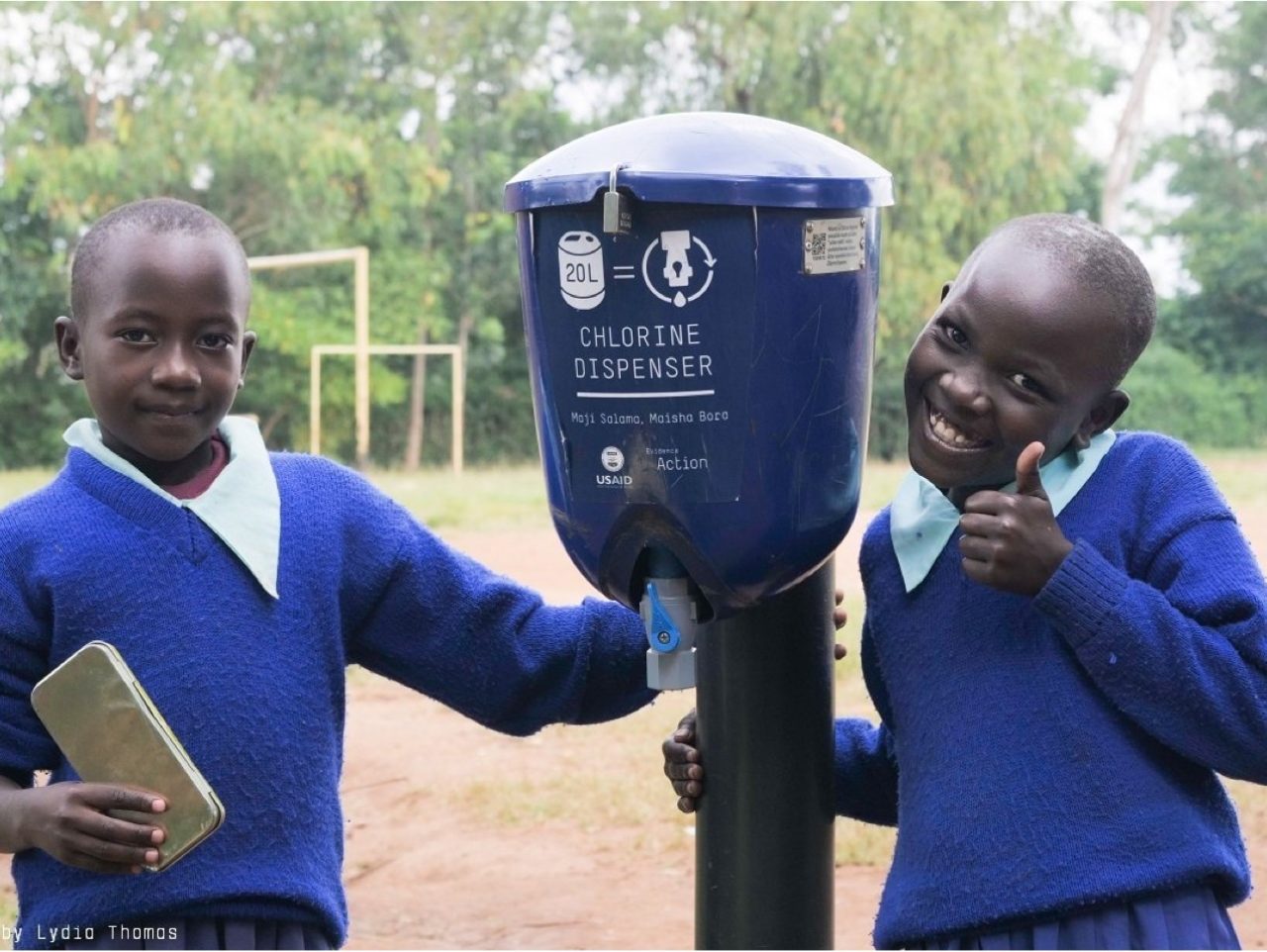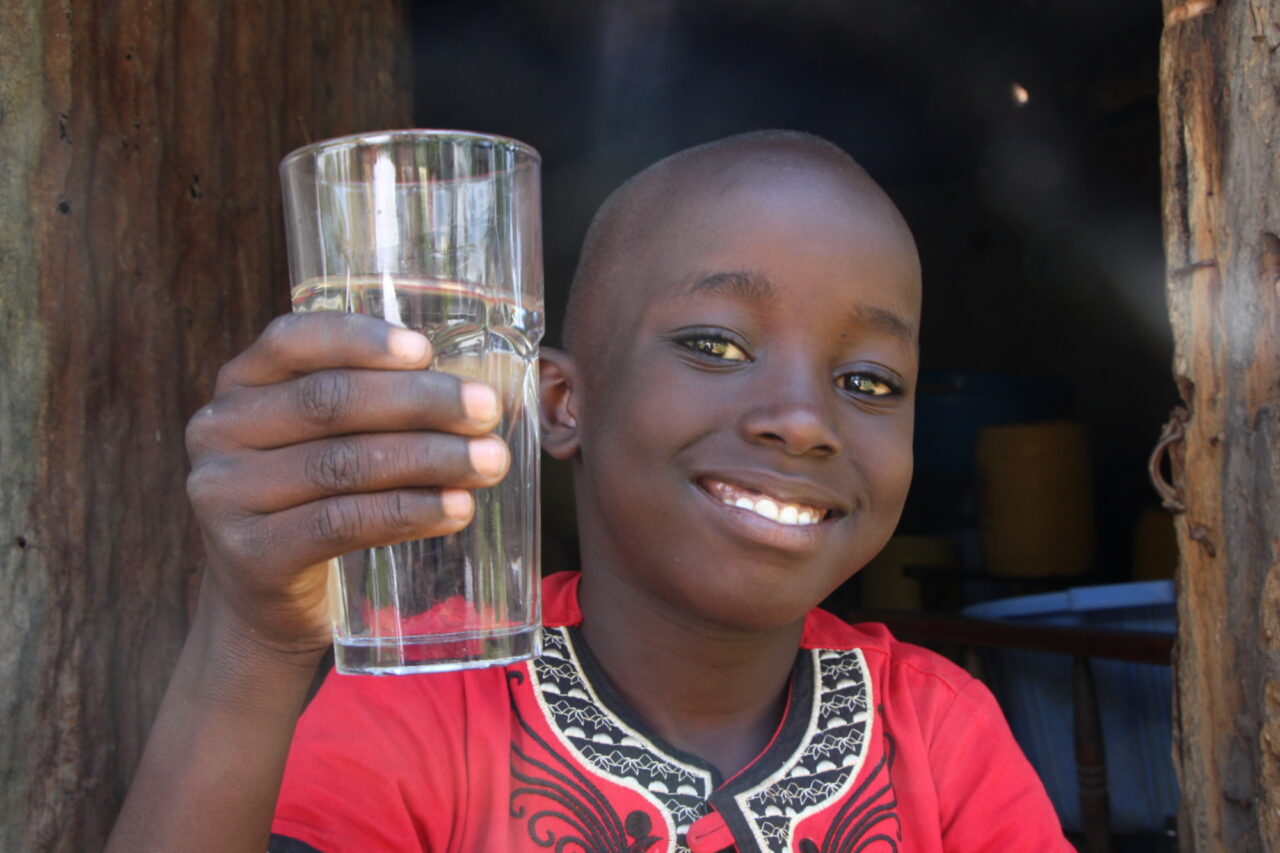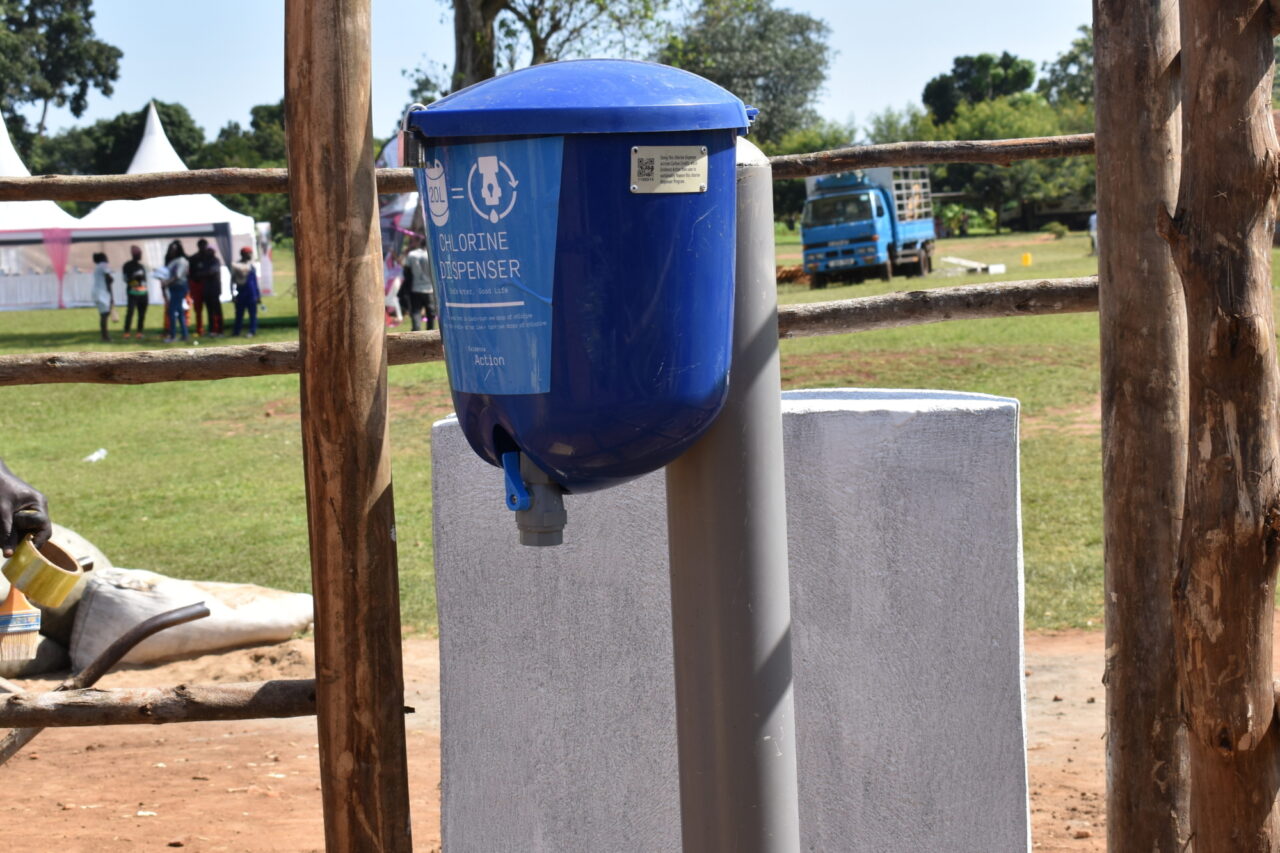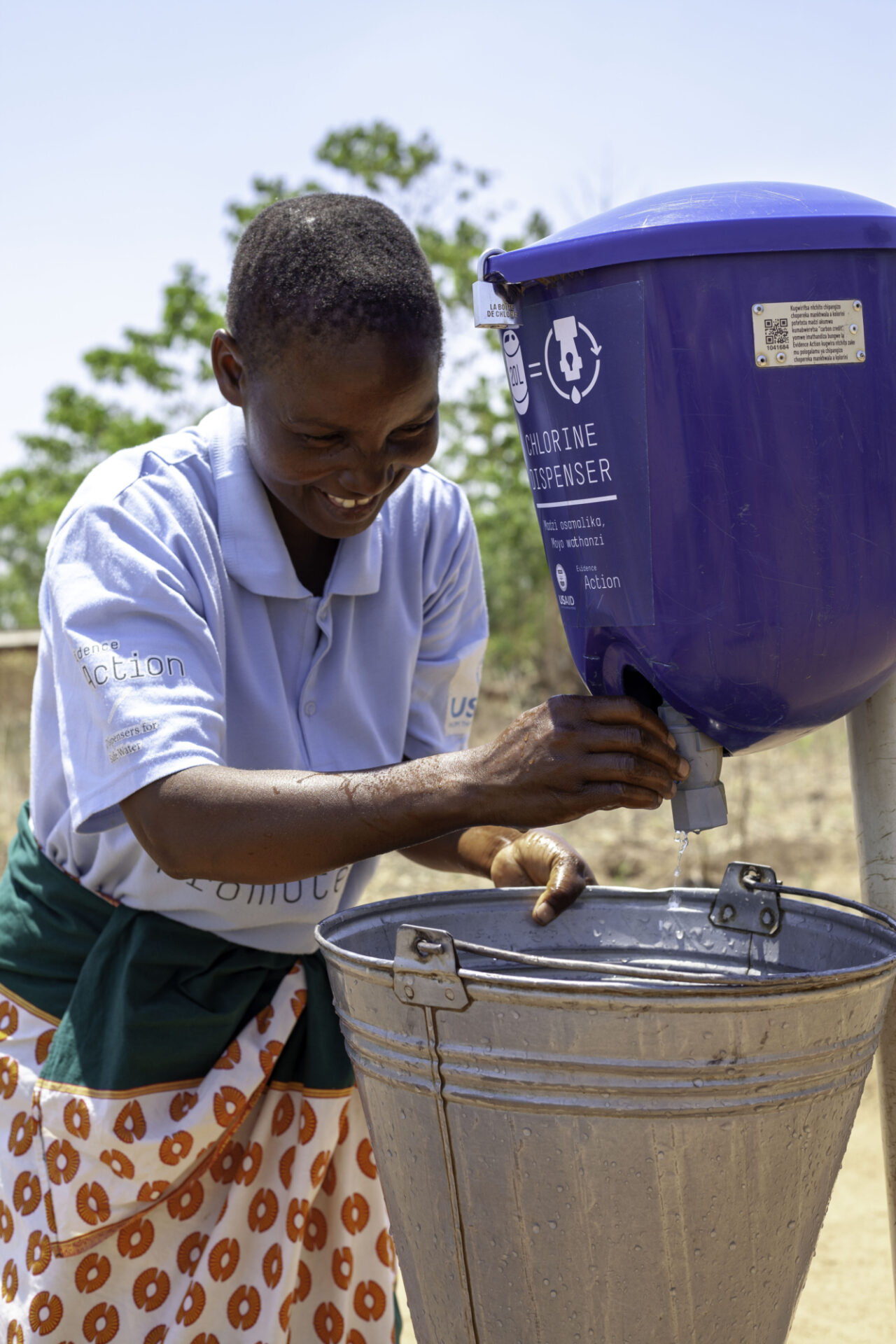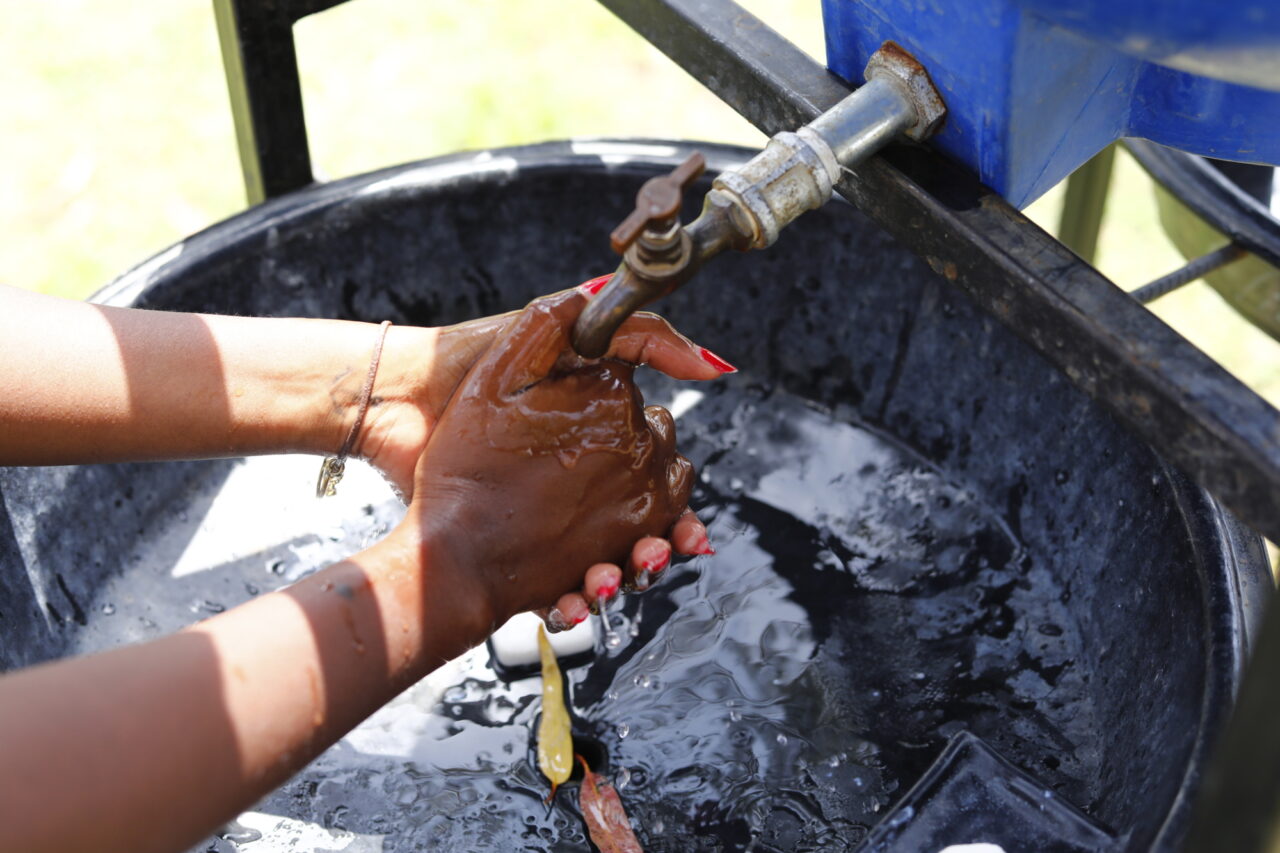
Safe Water Now
We use evidence to provide lifesaving access to safe water.
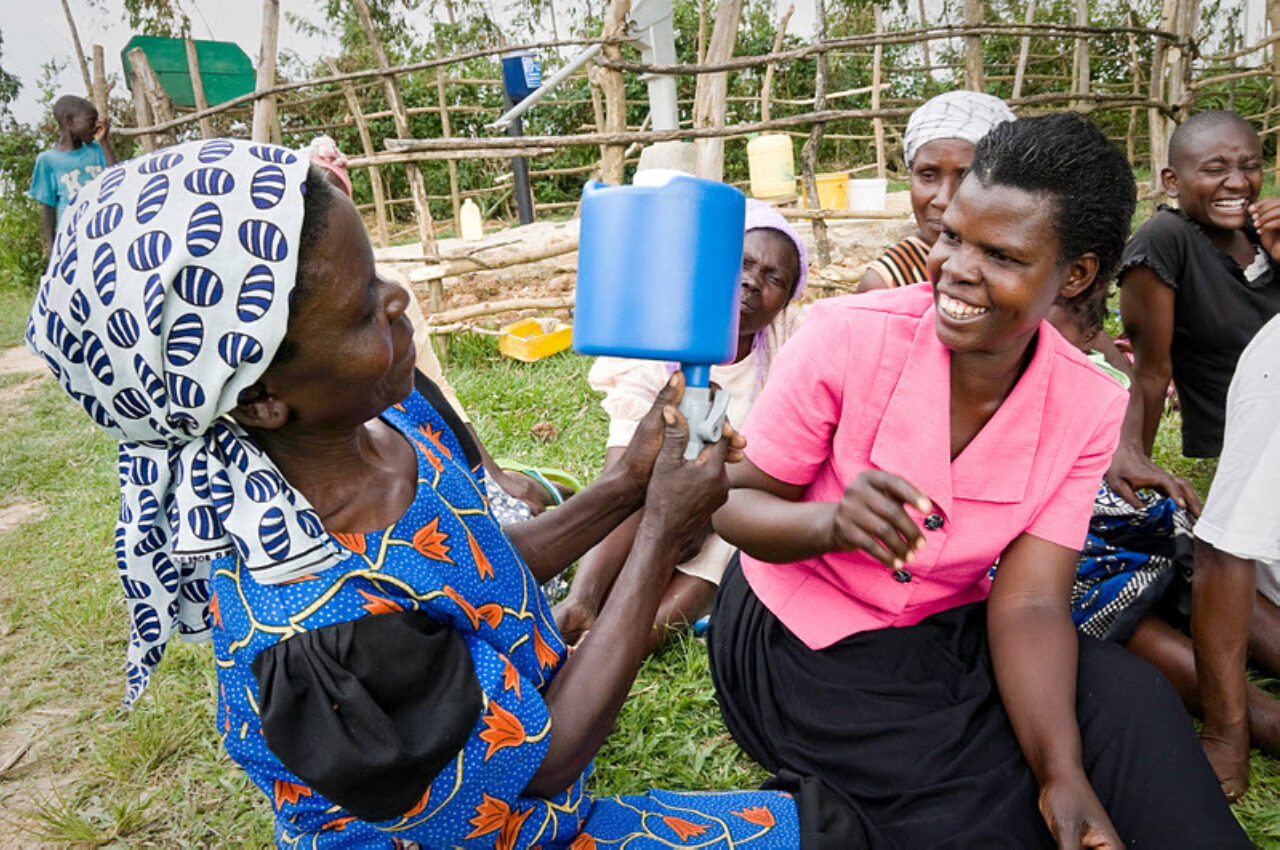
Why our model works: Delivering safe water to millions
Our safe water interventions are effective, scalable, and low-cost. The devices are simple, and every installation has local government and community buy-in. Here are some of the hallmarks of our unique approach to delivering access to safe water:
Human-centric design
These interventions are designed to make behavioral change easy for the end user — or not require it at all! Our bright blue dispensers are installed right next to water sources, making it easy for people to remember to use them, and helping them build safe water practices into their routines. And with in-line chlorination, since the water is treated automatically as it flows through pipes, no action is required at all.
Community partnership
We engage local leaders and community members before installing chlorination devices. Through a series of meetings, the community can come together to learn about the program, and decide whether or not to proceed with it. In places where our chlorine dispensers are used, volunteer “promoters” are elected to encourage dispenser use and let us know when refills or repairs are needed.
Last mile service delivery
In order to reach more remote areas, we’ve had to build a far-reaching network and supply chain infrastructure. An important part of this is our circuit rider team, who deliver supplies on motorcycles. They brave hazardous road conditions to ensure dispensers are working properly – addressing any issues within 72 hours — and are always stocked with chlorine.
Real-time data and continuous improvement
We focus on a small set of real-time, actionable data, which allows us to dynamically measure and improve our programs. Our team measures program adoption monthly by visiting a sample of households to test their water for chlorine — a true metric of whether families are benefiting from safe drinking water. We also measure dispenser functionality and whether promoters are reaching their communities. And we’re always asking ourselves: What are our bottlenecks? Can we innovate on our dispenser design? Can we even further streamline our delivery model?
Carbon credits
Water chlorination averts greenhouse gases, generating carbon credits that help sustain our safe water programming. Treating water through boiling typically requires the burning of wood or charcoal. This is financially burdensome to poor households, creates health risks related to smoke exposure, and has negative environmental impacts. By eliminating the need to boil water, chlorination creates “savings” in carbon emissions which, once certified, can be traded as carbon credits. The UNFCCC employs a rigorous audit process and has approved millions of carbon credits generated by Dispensers for Safe Water, which we reinvest directly into the program.
